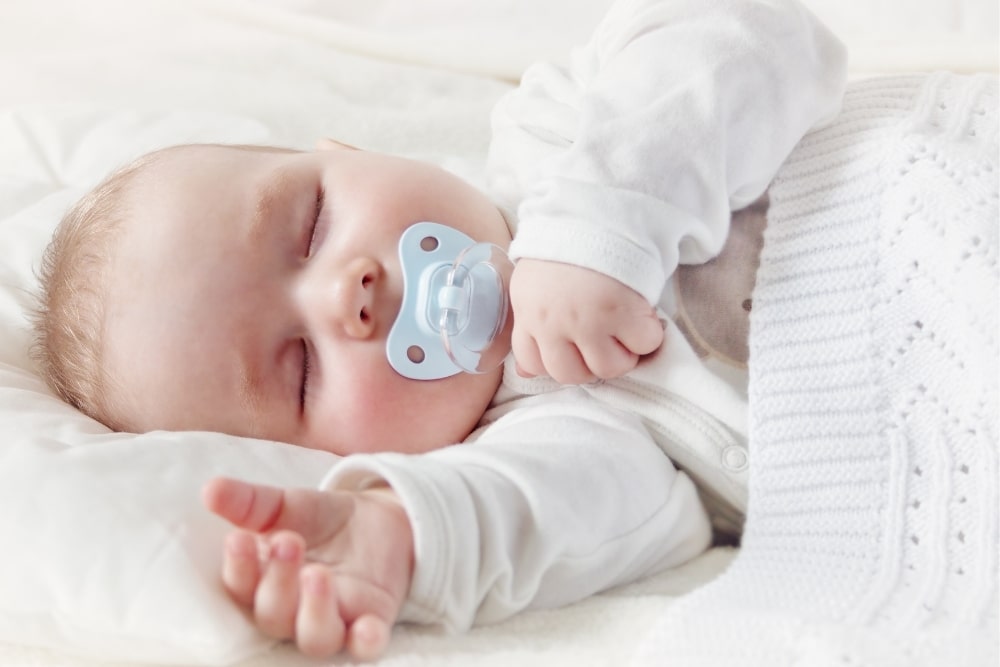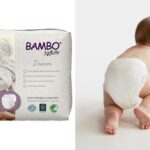Pacifiers are one of the baby items that cause heated debate among parents. There are those parents who swear by pacifiers and how they’ve changed their lives.
Then there are those parents who detest the things and would never allow their children to have them. Whichever camp you’re in, there are some therapeutic benefits to having a pacifier, for some infants.
Pacifiers can provide a break for mothers who are constantly breastfeeding. They can also help comfort a fussy baby so their exhausted parents can get some rest.
In this article
- So How Many Pacifiers Do You Actually Need?
- Do You Need Pacifiers?
- Choosing The Right Pacifier For Your Baby
- Here Are Some Of The Best Pacifiers Available
- What Age Should Your Baby Stop Using a Pacifier?
- Can Pacifiers Suppress Hunger?
- Do You Need To Sterilize Pacifiers Before Using Them?
- How Many Pacifier Holders Do I Need?
- FAQ
- The Final Thought
So How Many Pacifiers Do You Actually Need?
This will be different for everyone depending on the age of your child and whether they’re a thrower! But the answer is that you’ll need about three pacifiers for your baby. You should carry extras, especially if you travel often, or are in the car a lot. Keeping 1 or 2 spares in your vehicle could end up being a lifesaver!
You always need to carry a replacement pacifier with you in case the one you’re using gets dropped, dirty, or even lost. Another good tip is to always carry a spare either in your baby bag or even your car in case of emergencies.
Some children are very specific about which pacifier they like and will only use that one. Any slight variation means that they’ll discard it without a second thought.
If your baby has a preference for a certain pacifier then it may be worth having a small stock in case. However, don’t go overboard as your baby will grow and that means that their pacifiers will need to be changed.
View in gallery
Do You Need Pacifiers?
Most babies have a very strong sucking reflex. Some babies have even been seen on scans sucking their fingers or thumbs.
Sucking has a calming effect on babies and helps to soothe them. It goes beyond nutrition and this is why many parents rank pacifiers as one of their essential pieces of baby kit.
In certain circumstances, pacifiers can also have some medical benefits for a baby, including reducing the risk of Sudden Infant Death Syndrome (SIDS).
In some situations, pacifiers can help with breastfeeding instead of hindering it. They can help develop their sucking reflex, calm, and soothe babies in NICU who need to decrease their stress levels and infants at risk of hypoglycemia.
Choosing The Right Pacifier For Your Baby
Here are a few points to look out for before buying a pacifier:
- Make sure that it’s for the right age and stage that your baby is at.
- Aways choose a pacifier that is made of one piece as there is less chance of it coming apart and causing a choking hazard.
- Your child’s teeth may be the furthest from your mind at the moment as they have none. But you should always choose one that has an orthodontic design, as this will help to support your child’s gums and teeth.
- Pacifiers should have a large shield that is much bigger than the child’s mouth. Also, make sure that the shields have ventilation holes for airflow.
- It should have a symmetrical nipple shape.
- Avoid scented pacifiers.
- Be aware of what your pacifier is made of. Silicone or natural rubber pacifiers are always the best choices. Silicone will maintain its shape and will not expand. A natural rubber pacifier could potentially lead to an allergic reaction if you have a family history of allergy to rubber. They also expand with use and need to be replaced more often than other types.
Here Are Some Of The Best Pacifiers Available
1. The First Years Gumdrop Newborn Pacifiers
- GUMDROP PACIFIERS: These latex-free silicone pacifiers are trusted by hospitals worldwide
- UNIQUE CONTOUR SHAPE: Lightweight pacifiers are designed to fit babys face without hiding nose
- NEWBORN PACIFIERS: Available in bright colors and work with most pacifier attachers
- SUITABLE FOR: Ages 0-3 months
2. Ryan and Rose Cutie PAT Pacifier
3. Philips Avent Soothie Pacifier
4. Chicco PhysioForma One-Piece Pacifier
What Age Should Your Baby Stop Using a Pacifier?
It’s advised that you start weaning your child off their pacifiers by the age of six months to around one year. It should be completely discontinued by the age of four years old. This is to avoid any dental issues for your child.
The best way to start weaning your little one off their pacifier is to decrease the number of times in a day that they use it. Eventually, you should be able to reduce its use to just stressful situations or a specific time such as nap time.
Both the AAP and the American Academy of Family Physicians recommend that you should stop the use of pacifiers by the time they are 6 months to reduce the risk of ear infection.
Can Pacifiers Suppress Hunger?
The idea behind a pacifier is that they’re used to comfort a baby, as it mimics the suckling of a bottle or breastfeeding.
There is never a time when a pacifier should be used to replace or delay a meal. As parents, we need to learn the difference between a hungry baby and a baby who needs comforting.
View in gallery
Do You Need To Sterilize Pacifiers Before Using Them?
All pacifiers need to be sterilized before use, even newly-bought ones. Young babies under 6 months are especially susceptible to infections.
To be safe, it would be advised to sterilize pacifiers regularly for babies under 6 months. This can be done using boiling water as this will kill any germs that are present.
Once a child is over 6 months, they aren’t so susceptible to germs. Although you still need to ensure that pacifiers are clean before use.
How Many Pacifier Holders Do I Need?
For anyone who has a little one who loses pacifiers, pacifier holders or clips are the best inventions ever. They allow your child to learn to get their own pacifier when they require it and it keeps them clean and germ-free.
You would be best to keep a few pacifier holders in your baby bag as spares in case it is needed. You’ll never have to struggle with an upset child and a lost pacifier again.
FAQ
Are there any benefits to pacifier use relating to SIDS?
There are those professionals who believe that sucking on a pacifier during nap time and bedtime might reduce the risk of SIDS.
If I’m breastfeeding, can I offer my baby a pacifier?
It’s advised that you wait until your baby is 3 to 4 weeks old and you are settled into a regular and effective nursing routine before you offer a pacifier.
View in gallery
Are there any risks associated with pacifier use?
It will depend on the age and stage that your baby is at, but there are risks associated with each age group or stage. For babies up to 6 months and older, there’s a risk of breast weaning in older infants and for those six months to two years.
There is a risk that prolonged use of a pacifier could increase their risk of ear infections. For children ages 2 and up, there is the risk of dental issues such as misalignment of teeth.
What are the best practices for using a pacifier?
- Pacifiers should be cleaned regularly to avoid infections.
- They should be replaced at regular intervals.
- Always ensure that the pacifier you use is suitable for your child’s age and stage.
- Never dip a pacifier in any sweetened solutions such as honey.
- Pacifiers should be checked regularly for signs of wear and tear.
The Final Thought
Whether you believe a pacifier is vital or not for your baby, it comes down to the personal choice of the parents and the individual circumstances of the baby. Only you can make the decision for your child!


![Playard vs Crib - Which is Best in [2021]?](https://cdn.mominformed.com/wp-content/uploads/2021/03/playard-vs-crib-150x150.jpg)


![Today's Kids Play Yard Alternatives For [year]](https://cdn.mominformed.com/wp-content/uploads/2021/07/Beautiful-little-baby-girl-sitting-inside-playpen-150x150.jpg)